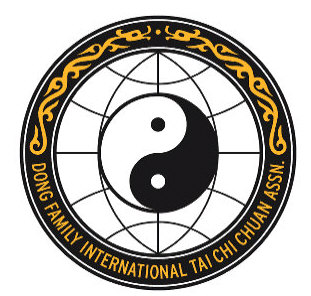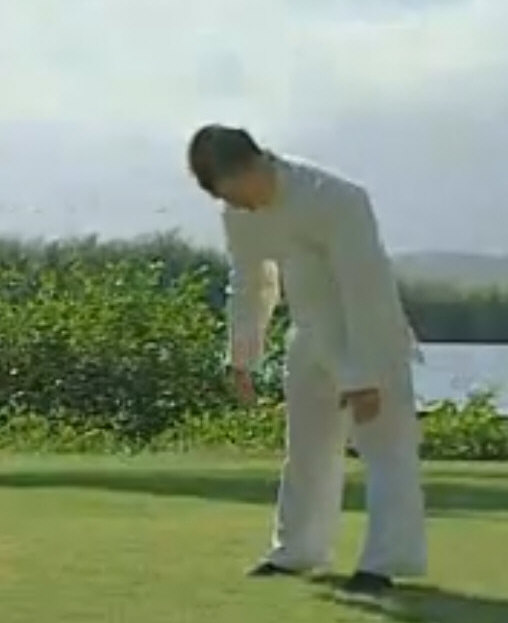Yang Chengfu Tai Chi Center - Schulen für das Taijiquan der Yang Familie
Chinesische Taiji-Meister mit Yang-Stil-Hintergrund dienen Westlern oft als Vorbild. Spitzenreiter ist sicher Altmeister Yang Chengfu und die Folge-Generationen seiner Familie. Doch den "inneren Kompass" solcher Schulen, Verbände und Lehrender sollte man kritisch sehen und nicht eins-zu-eins in das eigene Unterrichtskonzept übernehmen. Ein Beispiel sind die "Zehn Tai-Chi-Prinzipien". Als Alternative empfiehlt der DTB ev allen Interessierten sein Korrektiv des "Richtig Lernen und Lehrens".
Yang Chengfu und Tung Ying Chieh
Dong Family International Tai Chi Chuan Association
Lighting the Way
Master Dong Zeng Chen and the Spirit of Taijiquan
An article published in "Fighters" magazine in November 1991 ang Chengfu in H Dong Family International Tai Chi Chuan Association
Tung Ying Chie Schnelle Form aus Lieblingstechniken der Kampfkünste
Taiji Quan Ausbildung
Alex Dong: Orthodox Tai Chi Chuan - entspricht nicht der Methodologie der Yang Family
In Hawaii Änderungen Gerader Tritt zu Aufwärtstritt:
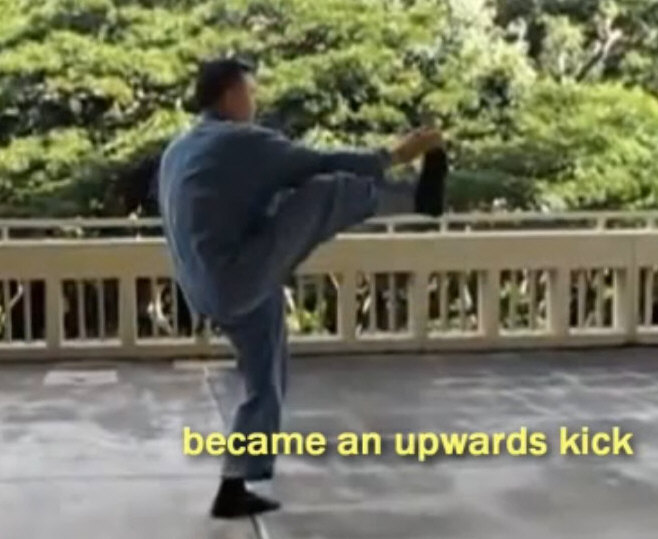
Abdruck nach Taiji Ausbildung
The Dong (Tung) family has a direct martial arts lineage to Yang Chen Fu, master who brought the world Yang Style Taijiquan. Dong Yingjie was a top disciple of Master Yang. His son, Dong Hu Ling, was famous in his own right for his skill in the Art. Two of his sons, Tung (Dong) Kai Ying, and Dong Zeng Chen currently teach and inspire students everywhere. Grand Master Dong Zeng Chen is the head of the Association. With more than 50 years of experience, he is the third generation in his internationally famous family to teach the art of Tai Chi Chuan (Taijiquan). He teaches in Hawaii and at workshops around the world. His brother, Grand Master Tung Kai Ying, is based in Los Angeles, California, and has numerous students and conducts workshops in many countries. Dong Zeng Chen's son, Master Alex Dong lives and teaches in New York City and also carries on the family tradition by teaching at seminars across the globe.
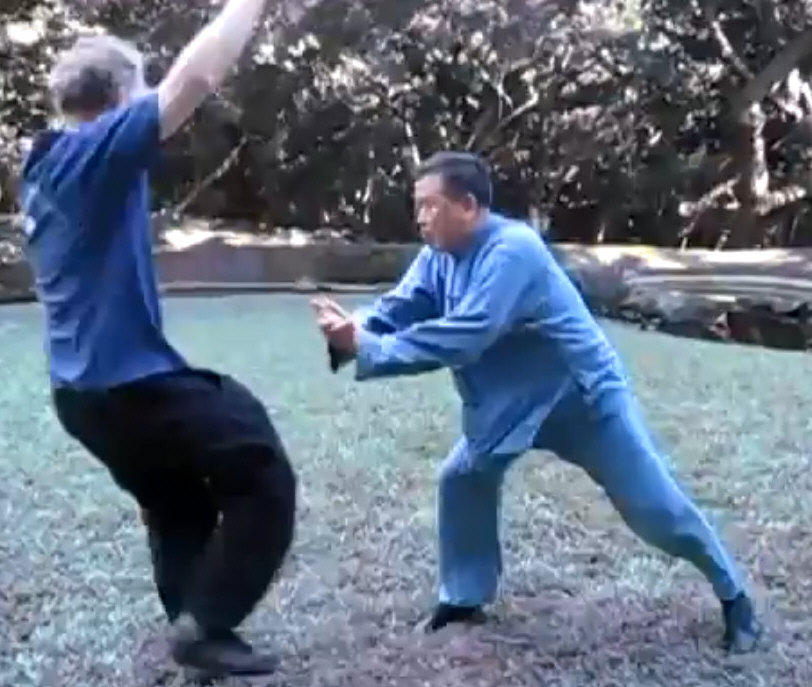
Meister Alex Dong benutzt hier beim Tuishou wie Meister Fu Shengyuan die gleiche Handhaltung: Die Handflächen sind nahe zusammen. Quelle: Push Hands Ausbildung und Yang Family
Dong Zeng Chen und das Erbe der Dong-Familie
Alex Dong Verbeugung 2011 Dänemark
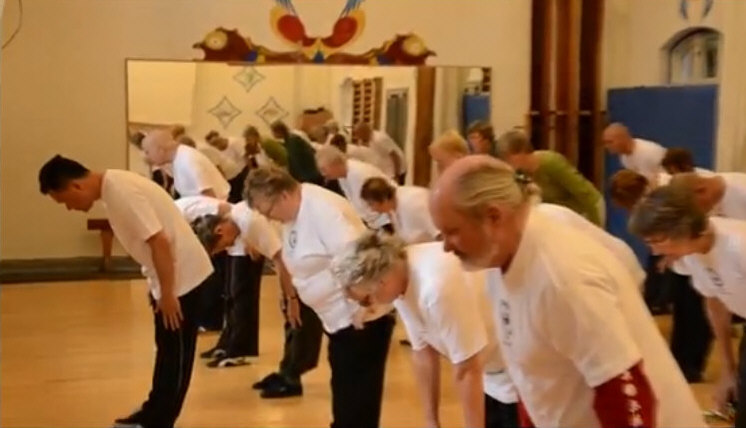
Meister Alex Dong benutzt auch beim Abschluß des Unterrichts das Verbeugen
Meister Alex Dong benutzt auch beim Abschluß der Form das Verbeugen
Versiegeln quer Fingerhaltung
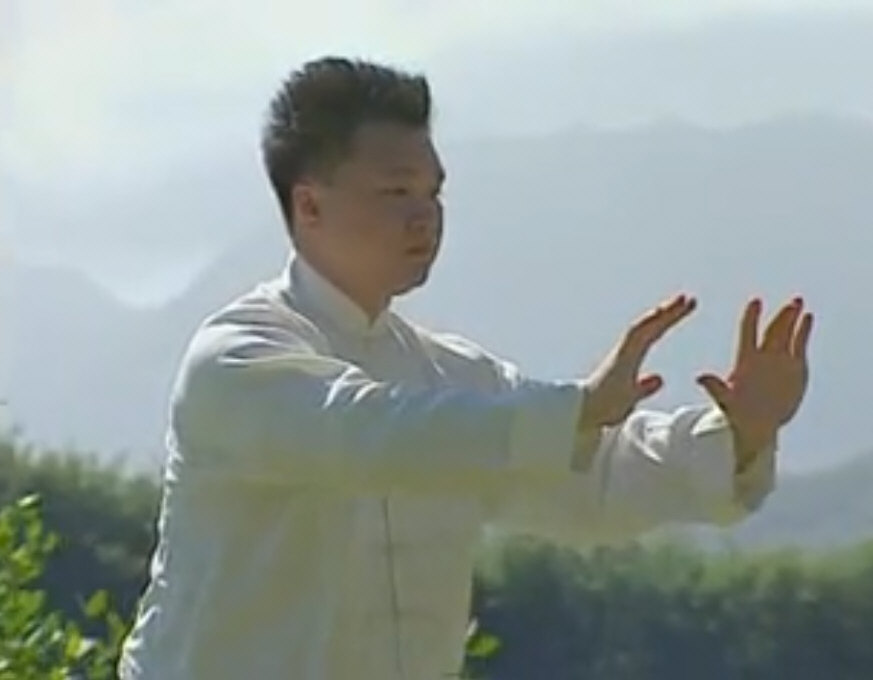
Meister Alex Dong beim "Versiegeln und Verschließen - man beachte die Handhaltung der Queren Hände.
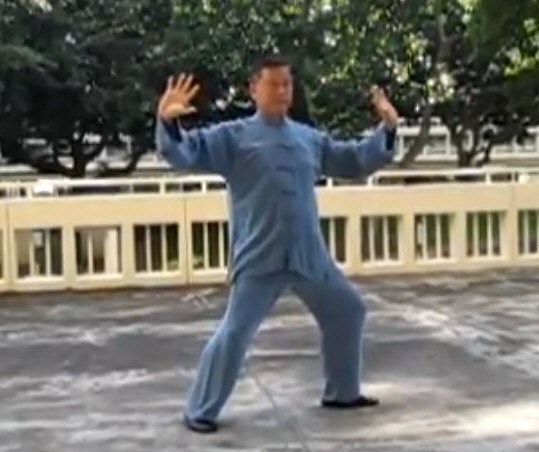
http://www.dongtaichi.com/Writings/fighters/throwing.html
It is often said among Chinese martial artists that the skills and knowledge of a famous expert do not live beyond his generation. A first generation might possess the hard earned skills that made him a legend but the succeeding generation may not have the aptitude or the inclination to further that, let alone maintain a reasonable standard. The third generation would often waste whatever is left and lose the inheritance altogether. Whilst many have fallen in such a wayward fashion, adding to the overall demise of Chinese martial arts, where are a blessed few who have gone from strength to strength. One such clan is that of Dong Ying Jie. Though not as well known outside Chinese circles, Dong Ying Jie (or Tung Ying Chieh) was considered top among the leading disciples of Yang Cheng-Fu ("Inside Kungfu" magazine cited him as "probably the most famous and accomplished modern practitioner of Taichi Chuan"), and followed Yang for most of his teaching years. A sick child in his early years, Dong, a Northerner, took to learning Taiji Chuan to improve his health. He first learnt the old Wu Style (a different and earlier style to that of the Wu style of Wu Jianchuan) from a famous exponent, Li Xiangyuan. Inquisitive about other styles of martial arts, and with the blessing of Li, Dong later went to study for a long period with Yang Cheng-Fu, fallowing him in his teaching and demonstration tours to China's various provinces. He was to assist in all these tasks and frequently took on challenges on behalf of the Yang School By then, Dong had become famous in the martial arts world. After Yang's death, Dong continued teaching in China, and later moved to Hong Kong where he established his own school there and in Macau. His son, Dong Huling came out to assist him in his practice of teaching Taiji Chuan and traditional Chinese medicine, and later, a grandson, Jiying also came to help. Although spending more time in Hong Kong, they left China with a whole host of followers in their ancestral home in Hebei Province with whom they kept close contact all the while, and through the work of another son, a grandson and other relatives of Dong Ying Jie who stayed behind to continue their tradition. To date, there are over 7,000 such students and disciples in China. Invitation In the fifties, at the invitation of the Chinese in Thailand, Dong Yingjie taught there, later to be replaced by his son Huling, who stayed for a few years. Earlier, followers of Chinese martial arts were embarrassed by defeats at the hands of Thai boxers, and Huling was one of about three Chinese martial arts instructors who maintained schools. He successfully met challenges and taught Taiji Chuan, impressing many with his quick results. The Dongs' efforts extended to the rest of Southeast Asia where students continue to flock to them in Singapore, Malaysia and Indonesia. Because of their fame, Chinese in the US and Canada invited them in the hope of their setting up schools. The Chinese in Hawaii were to hear of the Dongs, and Huling migrated there where he still runs a school to this day. His eldest son, Jiying joined him from Hong Kong and later moved to expand their school to Los Angeles and San Francisco. Jiying, (Kai-Ying Tung to Cantonese speakers) established quite unwittingly his own reputation way back in China, where the much-publicised Cheng Manching, trying to build his own reputation had gone to try pushing hands with Huling. Accepting the challenge, the Dongs instead decided to give the young Jiying an opportunity to gain some experience. At the age of 17, Jiying easily met the much older challenger and was not only able to neutralise and uproot his opponent but also to send him flying all over the place. Dong Zengchen is the younger of Dong Yingjie's grandsons. He left China seven years ago to from his father in Hawaii. Like his grandfather father, father and brother, he steeped himself in the time-honoured tradition. Well known and respected in China by traditionalists, he became one of the few Taiji Chuan exponents who had successfully seen off challenges from both the hard and soft schools of martial arts. Many of his students and disciples are exponents from both systems. Today, he is the Vice Chairman of the Dong Academy in Hebei, and returns there every year to lend a hand, as well as to teach at Beijing, Shanghai and Guangzbou. Though famous through their expert knowledge of the Yang Taiji Chuan and its complete repertoire of push-hands, swords, sticks and spear, the Dongs are also famous for their skills in the Wu Style Taiji Chuan, a relatively rare style, sometimes known as the "hard" style of Taiji Chuan. Through his contacts with other schools of martial arts and his experience in Taiji Chuan in general, Dong Yingjie later devised the Taiji Kuai Chuan, a "fast" form which brings to life Taiji Chuan applications and methods of countering the hard with the soft. Every year at the requests of Taiji Chuan enthusiasts in Singapore and Malaysia, Dong Zengchen spent a month each in these countries before going to China for the same purpose of conducting classes and raising standards. Both masters and students of other schools often travei long distances to leam from him or just to pay a courtesy visit. Over the years his deep knowledge of the Art and his openness in character has won him many friends in this region. A devoted teacher, he makes the Art truiy understandabie and accessible sibie to people previously unable to appreciate the real rneaning of Taiji Chuan. Even old hands had to accept that they had been incorrectly understanding standing and practising the Art. To their surprise, too, practitioners of many decades' standing found themselves not unlike beginners when they pushed their hands with Dong. Good-humouredly, be would point out their mistakes and then its quickiy back to even more practice. Unconservative (and without hype) in his teaching approach, Dong makes available his vast knowledge gained from the time of his grandfather through to present days. The words of the Ciassics come alive when he teaches, corrects a posture or points out an error. His enthusiasm easily infects learners who find each session more than enough to work on and to absorb, giving them greater confidible ence and genuine faith in the Art. Thoroughiy versed in the applictions of Taiji Chuan (his grand father helped Yang Chengfu write on Taiji Chuan, and Huling had written a book on applications) - an area which remains eiusive to rnany, Zengchen's chen's technical skill can be gauged by the presence of many leading masters during his lessons. It can be seen through his mastery that true Taiji Chuan need not be boosted with extraneous and often irrelevant exercies, or ideas and practices from other martial arts or schools of thought. There is simply too much material to master without resorting to these if one meets a true art. Keen that peopie are not misled, his students point out tricks that are involved in many circus-like demonstrations one often come across in supposed Taiji Chuan displays. instead of being impressed by "extraordinary chi" and "powerful jing" one should carefuliy examine how principies of physics and student collaboration are utilized. And instead of highlighting the techniques of "fa jing" (for which he is well-known and tested ), Dong likes to emphasize, for instance, skills in neutraliizing which are "more important though more difficult to master", and "... being sides, there are oftens tra tricks and plain brute force not detected by the novice" when performances of fa jin are "... set up". One needs only to feel the kind of cleans extra throws or pushes used by Dong, to be aware of the gaps, deficiencies, and the "hollows" of the less skilled practitioners. Defending, attacking or countering even during a retreat, he wouid instruct how a vast array of techniques, for examples, jabs, sweeps, throws, locks, sometimes simultaneously couid be appled and all these from Taiji Chuan's own repertoire!
Master Dong's position within this renowned heritage is recognised by some of the rnost distinguished traditionalists. He is said to have "style, finesse and character". Master Dong hirnself emphasised to us the importance of characterbuilding. He spoke of the quality of 'Wu De' ('self-cultivation', literaliy civilization). "Learning a martial art is learning to become a better person. As your temperament improves, so will your Taijichuan and as your Taijichuan improves, so should your temperament. And this is Kungfu".
Many would agree with a comments from one of the group: "Rather than providing instant remedies for our Form or push-hands problems, we were drawn to the root causes and ways of dealing with them". "Forego ego - the ultimate goal is conquering oneself", Master Dong said, "Taiji is natural. Let go, relax and seek tranquility" Master Dong returns in November. This year he will tour South East Asia, Europe and China where he will be an hunored guest at a conference hosted by the Yongnian Taijichuan Association.
http://www.dongtaichi.com/Writings/fighters/lighting.html
Das weltweit verbreitete Yang-Chengfu-Taijiquan hat ein neues Zuhause in Europa - herzlich willkommen bei unserem internationalen Tai-Chi-Forum . Weiterlesen: Yang-Chengfu-Tai-Chi Chuan Center.
 Herzlich willkommen beim Yang-Chengfu-Tai-Chi-Zentrum Hamburg,
der offiziellen Schule des DTB-Dachverbandes. Das Institut recherchiert renommierte
Yang-Chengfu-Center, den Altmeister
Herzlich willkommen beim Yang-Chengfu-Tai-Chi-Zentrum Hamburg,
der offiziellen Schule des DTB-Dachverbandes. Das Institut recherchiert renommierte
Yang-Chengfu-Center, den Altmeister 